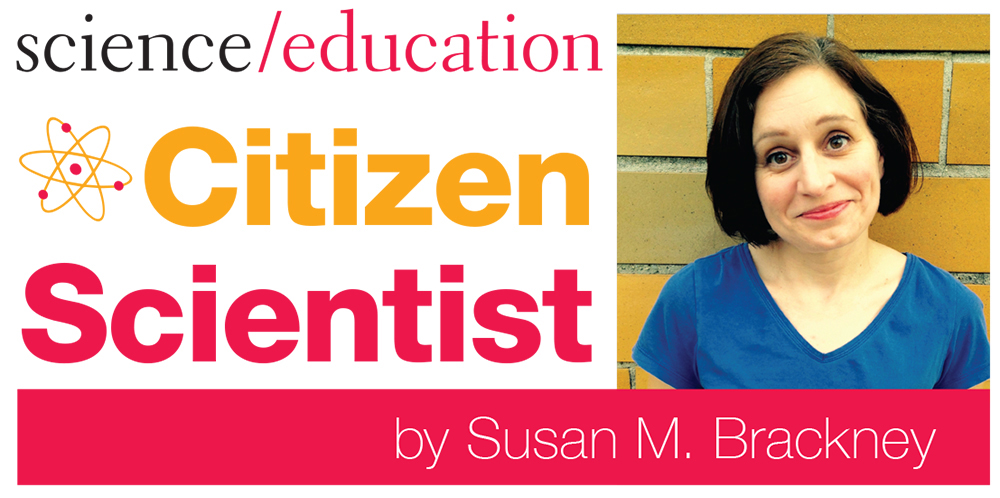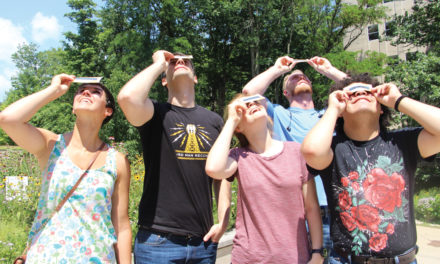
BY SUSAN M. BRACKNEY
With darkness closing in early, winter was once my nemesis. Now, though, I recognize the season’s potentially significant citizen science value. Theoretically, the leafless trees and dark skies should provide stargazers with stunning views, but finding a vantage point that isn’t flooded with artificial light has become increasingly difficult. Government bodies, area schools, businesses—even individual homeowners—illuminate Bloomington’s night sky, and collectively contribute to light pollution.
Fortunately, projects like the Globe at Night program empower citizen scientists worldwide to measure and report the degree to which light pollution limits the visibility of their constellations. Why care? Light pollution isn’t simply a nuisance to amateur astronomers. Artificial lighting, especially the kind directed skyward, wastes money and unnecessarily increases our carbon footprint.
By accessing these crowd-sourced data points, researchers can better understand the effects of light pollution on natural ecosystems. And even if you don’t care a bit about bats, night-flying insects, or other nocturnal creatures, you should know that, according to the International Dark-Sky Association, exposure to artificial light at night interferes with human circadian rhythms and melatonin production. This, in turn, can mess with our sleep, immune systems, and hormonal functions, thereby boosting our risk for obesity, diabetes, depression, and even some cancers.
Globe at Night has been collecting data for nine years and received 15,418 observations last year alone. Of those, 118 came from Indiana. Globe at Night provides details about constellations to expect in one’s area and tutorials on measuring apparent magnitude; however, the development of a corresponding smartphone app has made submitting light pollution observations to the organization even easier. The “Loss of the Night” app is free and available for both iOS and Android platforms.
But what if the citizen science bug bites on an overcast night? Or in the middle of the day? Galaxy Zoo is a perfect—and somewhat meditative—citizen science project for just these occasions. Examining breathtaking images of distant galaxies, online participants are asked to classify them by shape. A galaxy’s shape offers clues about what has happened there. The collected data can also teach us about the history of the universe itself. Some galaxies are smooth. Others are disk-shaped or feature spiral arms or odd bulges. Still others include stars, strange artifacts, or they may be merging with other galaxies.
Not sure if you’ll classify everything perfectly? The site offers sample images and descriptions. And, don’t worry, other people are also weighing in, with astronomers aggregating the data. Besides, considering that Galaxy Zoo has been making different tasks and image sets available since 2007—and there are about one hundred billion galaxies in the observable universe—you’ll have plenty of opportunities to keep practicing.
Check out the Globe at Night program at globeatnight.org and Galaxy Zoo at galaxyzoo.org.





